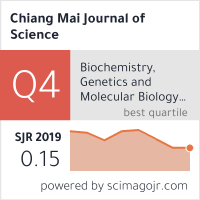JOURNAL DETAIL
Polymer-Peptide Conjugate Hydrogels; Towards Controlled Drug Delivery
Paper Type |
Contributed Paper |
Title |
Polymer-Peptide Conjugate Hydrogels; Towards Controlled Drug Delivery |
Author |
Arun A. Sohdi, Darren Campbell andPaul D. Topham* |
Email |
p.d.topham@aston.ac.uk |
|
Abstract: Peptide-based materials exhibit remarkable supramolecular self-assembling behavior, owing to their overwhelming propensity to from hierarchical structures from α-helices and β-sheets. Coupling a peptide sequence to a synthetic polymer chain allows greater control over the final physical properties of the supermolecular material. So-called ‘polymer-peptide conjugates’ can be used to create biocompatible hydrogels which are held together by reversible physical interactions. Potentially, the hydrogels can be loaded with aqueous-based drug molecules, which can be injected into targeted sites in the body if they can exhibit a gel-sol-gel transition under application and removal of a shear force. In this review, we introduce this topic to readers new to the field of polymer-peptide conjugates, discussing common synthetic strategies and their self-assembling behavior. The lack of examples of actual drug delivery applications from polymer-peptide conjugates is highlighted in an attempt to incite progress in this area. |
|
Start & End Page |
351 - 372 |
Received Date |
2012-03-16 |
Revised Date |
|
Accepted Date |
2012-04-21 |
Full Text |
Download |
Keyword |
polymer-peptide conjugates, hydrogels, drug delivery |
Volume |
Vol.39 No.3 (JULY 2012) |
DOI |
|
Citation |
Sohdi A.A. and Topham* D.C.A.D., Polymer-Peptide Conjugate Hydrogels; Towards Controlled Drug Delivery , Chiang Mai Journal of Science, 2012; 39(3): 351-372. |
| View:791 Download:341 | |
RELATED ARTICLE
page: 224 - 236
Author:Morteza Bahram, Fariba Hoseinpour, Naimeh Mohseni and Peyman Najafi-Moghaddam
Vol.44 No.1 (JANUARY 2017) View: 923 Download:727
page: 183 - 189
Author:Kanarat Nalampang, Nantarat Suebsanit, Chinanat Witthayaprapakorn, and Robert Molloy
Vol.34 No.2 (MAY 2007) View: 956 Download:306
page: 471 - 478
Author:Patchara Punyamoonwongsa * and Brian J. Tighe
Vol.32 No.3 (SEPTEMBER 2005) View: 858 Download:275
page: 71 - 82
Author:Tiwaporn Siriwittayakorn [a], Nantarat Suebsanit [a], Robert Molloy [a], Paisit Siriwittayakorn [b] and Malinee Prasitsilp [c]
Vol.28 No.2 (DECEMBER 2001) View: 860 Download:279
Copyrights © Since 2021 All Rights Reserved by Chiang Mai Journal of Science










